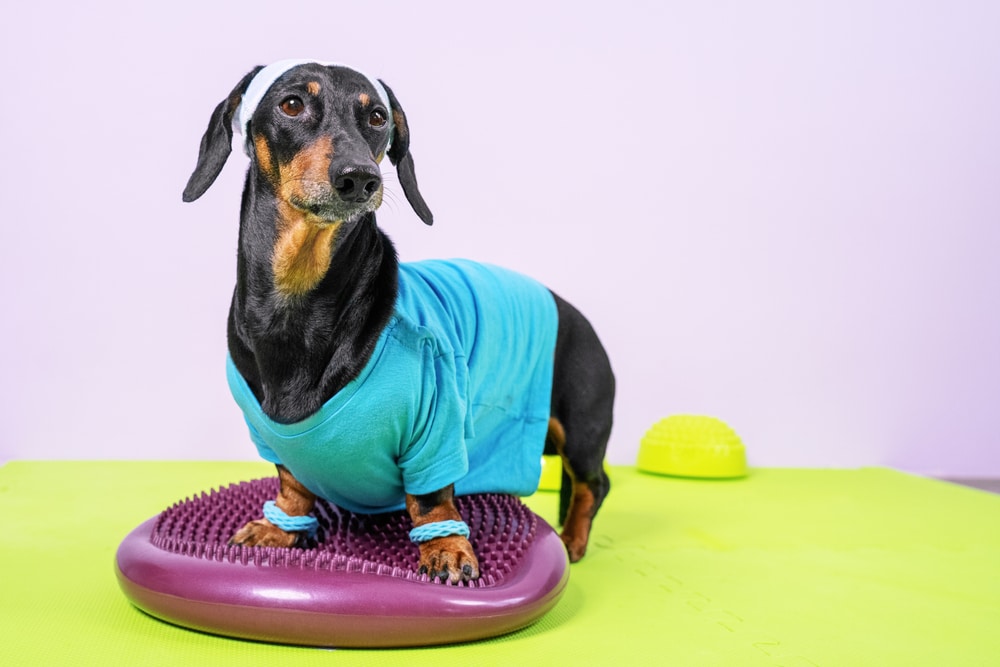People sweat as a way to release excess heat from their bodies and to cool themselves down on a hot day or after a workout. But you’d never see a dog wet and dripping with perspiration however much they play in the hot sun. So, do dogs sweat?
When we sweat, evaporation of moisture removes body heat by conduction and that helps lower our body temperature when we are overheating. Dogs usually have a layer of fur that would trap the sweat as it tries to escape and negate its function. Dogs do sweat from certain parts of their bodies, but they don’t rely on sweating to cool off.
Table of Contents
The Science Of Sweat
Sweat is produced by glands found in the dermis, the second layer beneath the skin surface. Humans have two types of glands: eccrine glands are found all over the body and produce watery secretions that evaporate quickly and function mainly to cool us down. Sweating is the most important way in which humans and some other animals such as horses and primates get rid of excess heat.
Liquid sweat is secreted and forms a layer on the skin’s surface. Like water boiling to produce steam, the sweat molecules conduct heat energy out of the body to evaporate to become a vapor. This gaseous vapor can then be taken away by air currents in the environment, carrying the excess body heat with it.
Where Do Dogs Produce Sweat?

Humans also have apocrine glands that are found in areas with many hair follicles such as the armpits and scalp. Dogs have these too, attached to the hair follicles all over their bodies. They produce an oily secretion that doesn’t play a significant role in temperature control. However, in many species, they are regarded as scent glands used to send chemical messages that help animals identify each other.
Dogs have a third type of gland called merocrine glands, located on their paw pads and nose. These function similarly to eccrine glands in humans and play a very minor role in temperature regulation. They produce a small amount of sweat. They may cause your dog to leave damp pawprints in their wake as they walk about on a hot day. The old adage that a wet nose indicates a healthy dog likely comes from this too.
A fever is the body’s natural way of helping the immune system fight off invaders. In order to maintain the fever state, the body stops producing sweat. Therefore a dry nose may indicate a fever. However, it’s not a very reliable way of identifying that your dog is unwell.
How Do Dogs Cool Themselves Down?
Because they don’t produce enough sweat, dogs have adapted other ways to cool themselves down. A major way that dogs eliminate extra body heat is by panting, which encourages airflow inside the mouth and lungs. Moisture lining these internal surfaces evaporates similarly to sweat evaporating in humans. Panting helps to expel the heated vapor from the dog’s body. In order to effectively regulate its body temperature, a panting dog must be able to open its mouth fully and stick out its tongue. That’s why using the wrong type of muzzle can have fatal consequences for a dog that is overheating.
Another way that dogs lose heat is by vasodilation. This is the process by which smaller blood vessels open up to allow blood to flow to the extremities to increase surface area for heat loss. Heated blood is carried away from the major internal organs and towards the surface of the skin where the heat is removed from the body by radiation and convection. Reddish skin that is warm to the touch is a sign of significant vasodilation and may be an early indicator of heatstroke.
In Conclusion: Do Dogs Sweat?
Contrary to popular belief, dogs definitely do produce sweat, but it may not be for the reasons you’d believed. Sweating is not an important way for dogs to regulate their temperature. A dog that isn’t sweating on a hot day isn’t necessarily comfortable. It is important to look out for other signs such as panting or very red skin to tell if your dog is feeling too hot, to prevent dangerous repercussions such as heat stroke.
So, what do you think about dogs and sweat? Let us know in the comments below!
